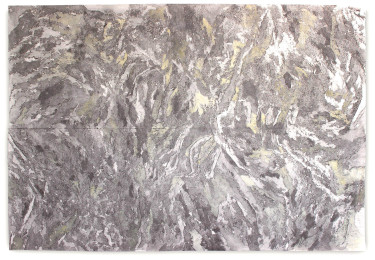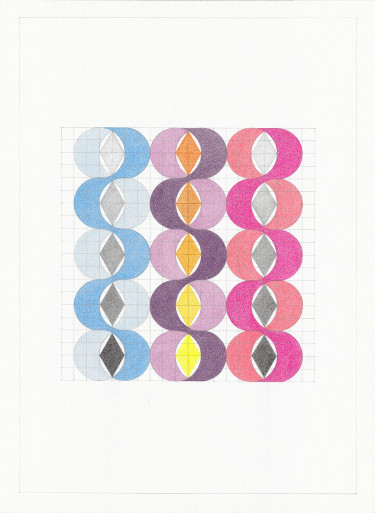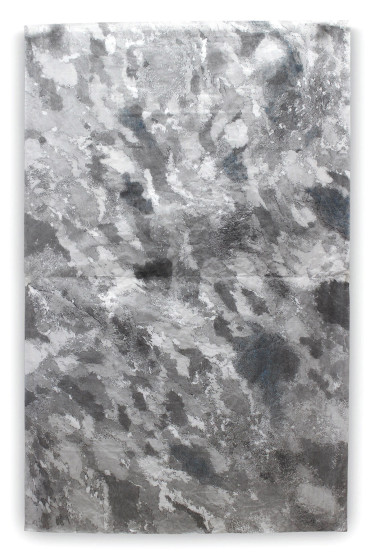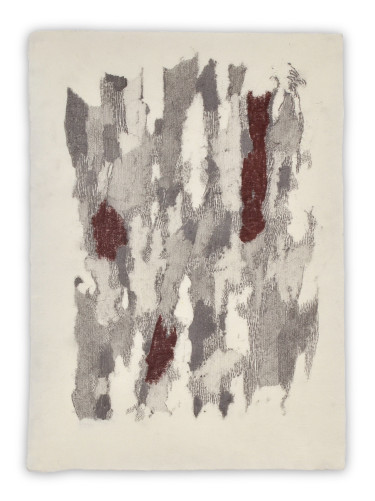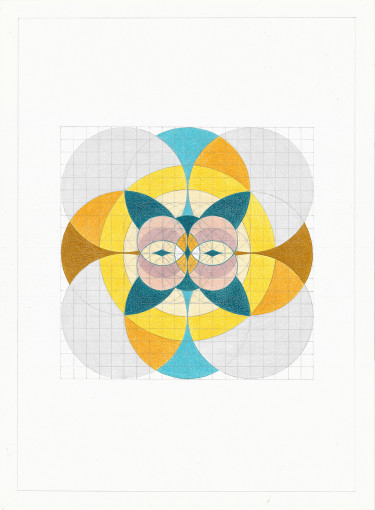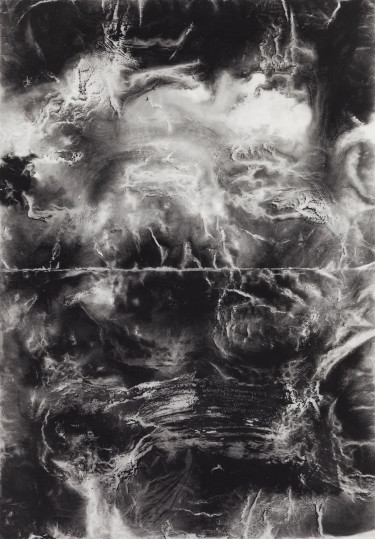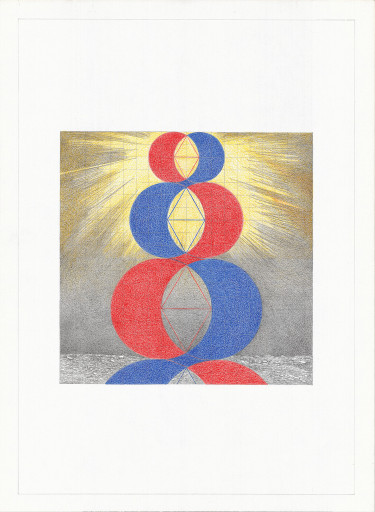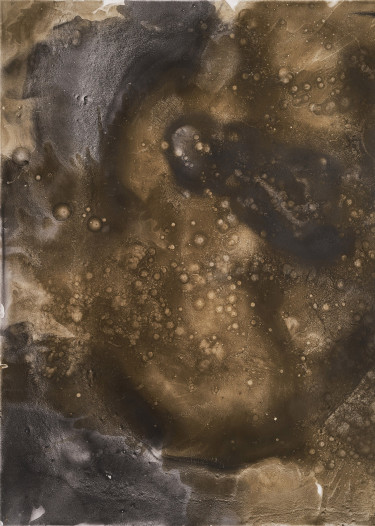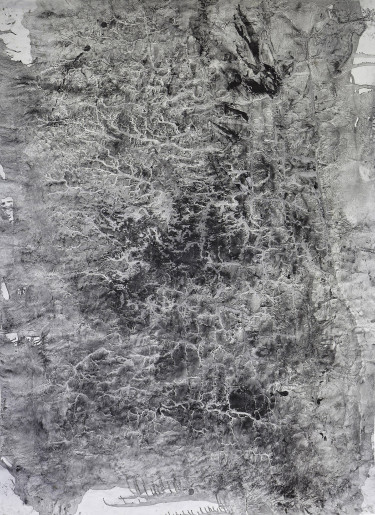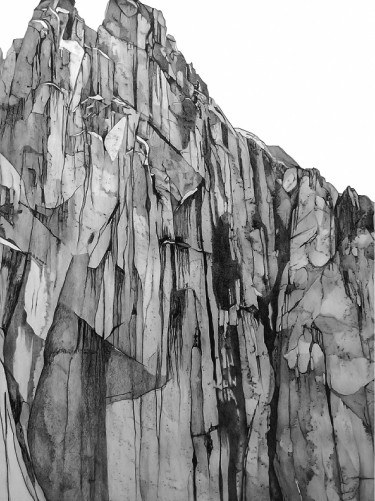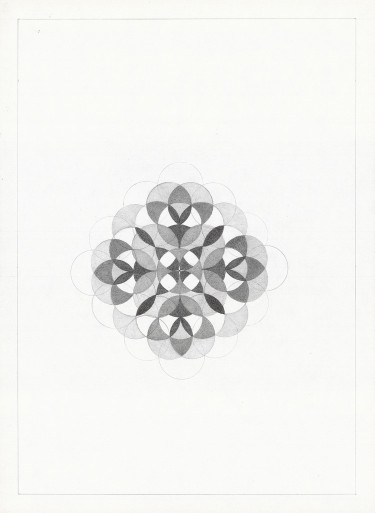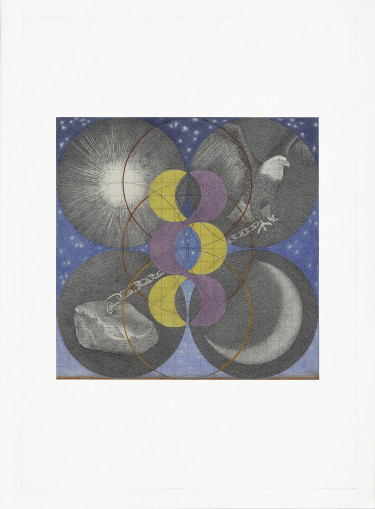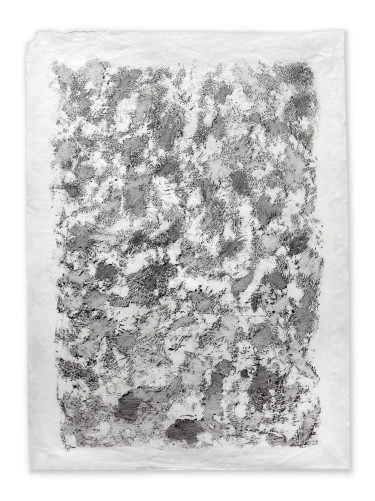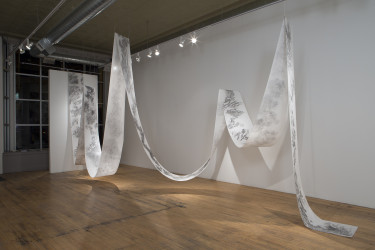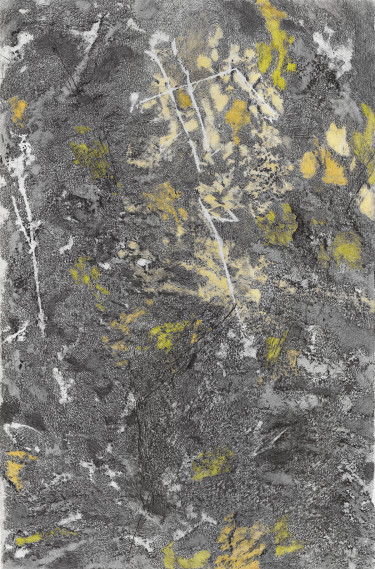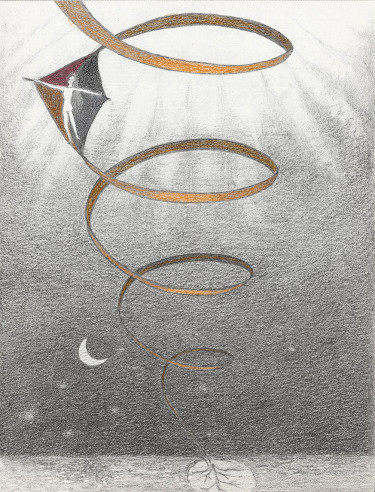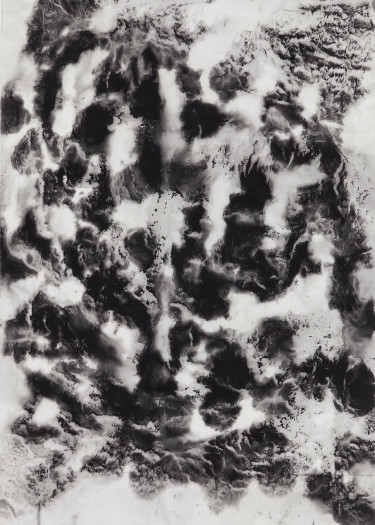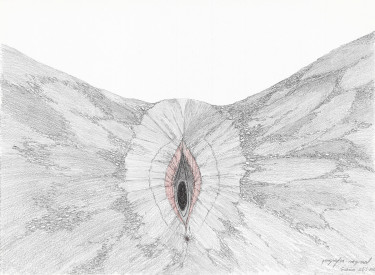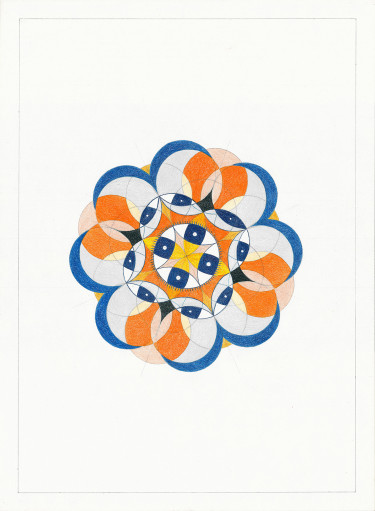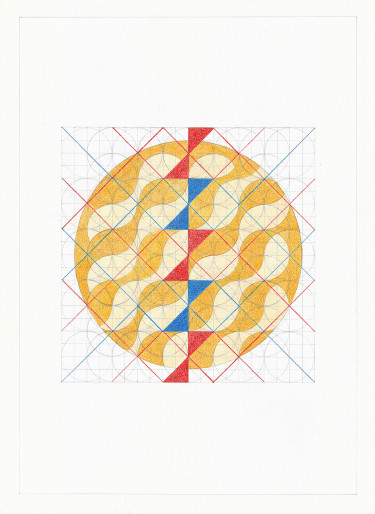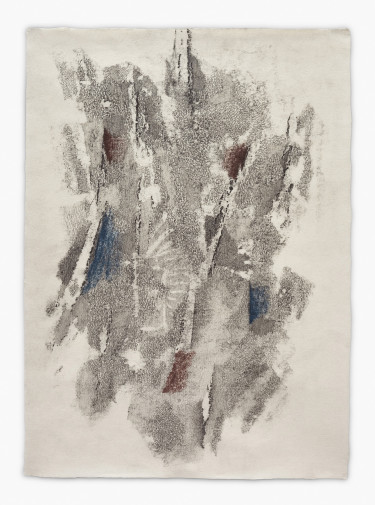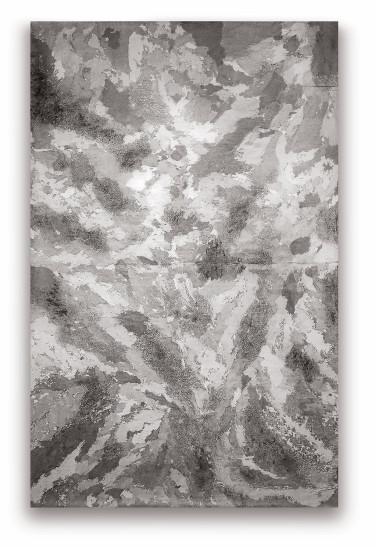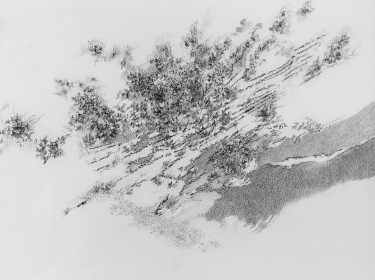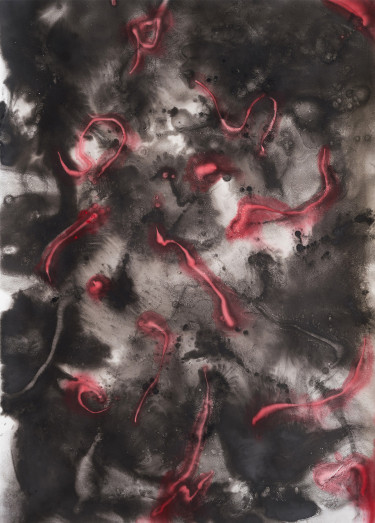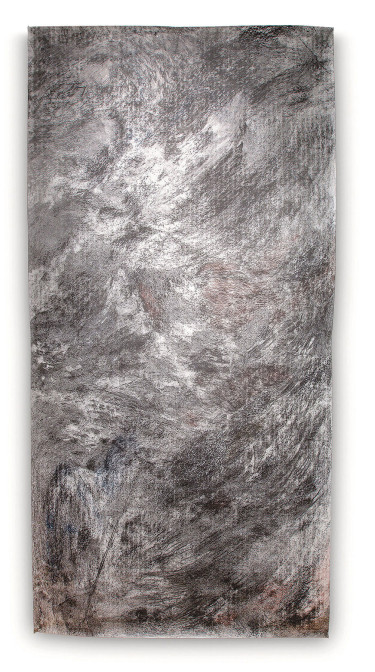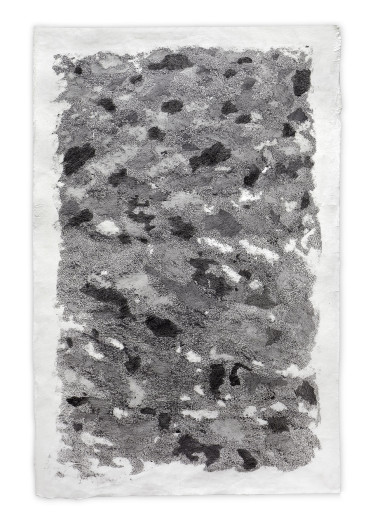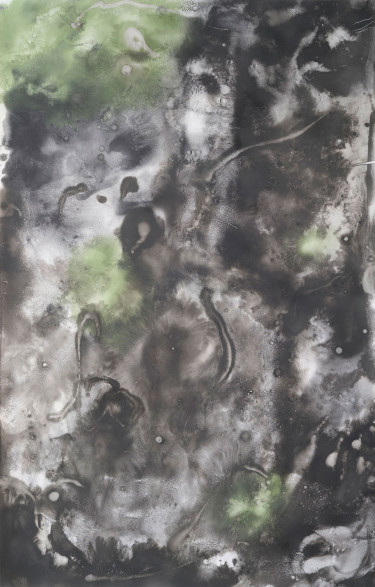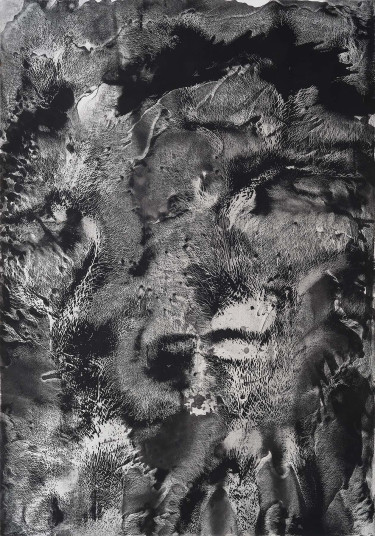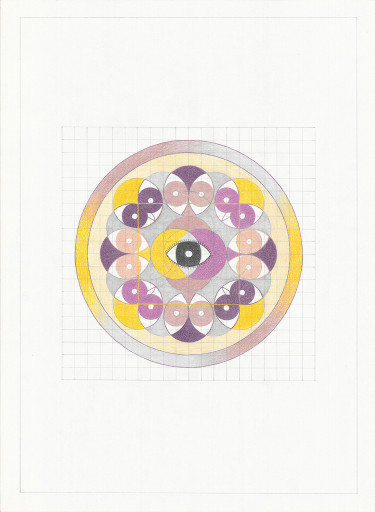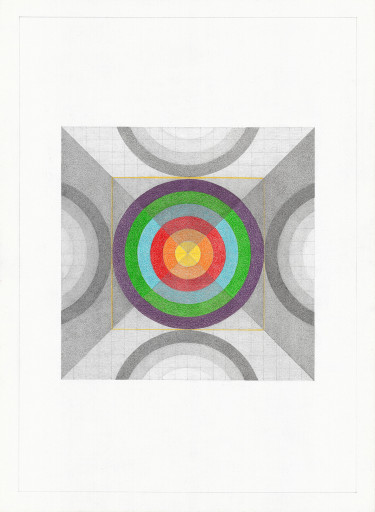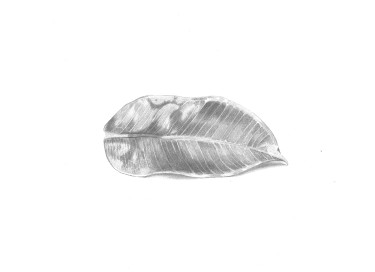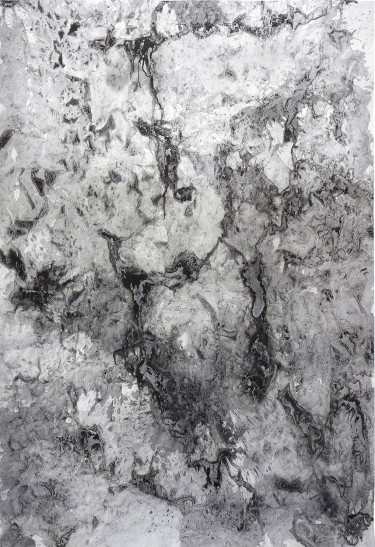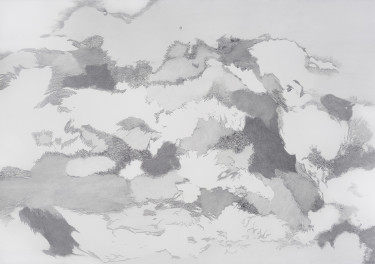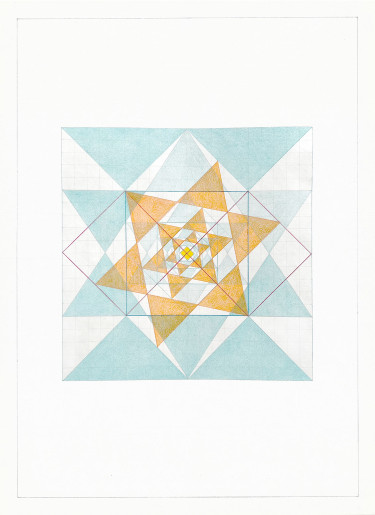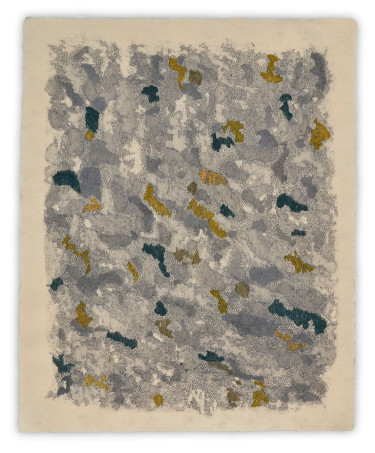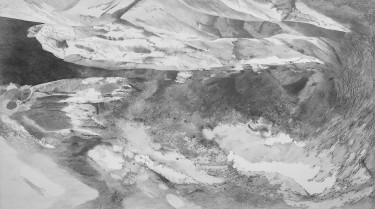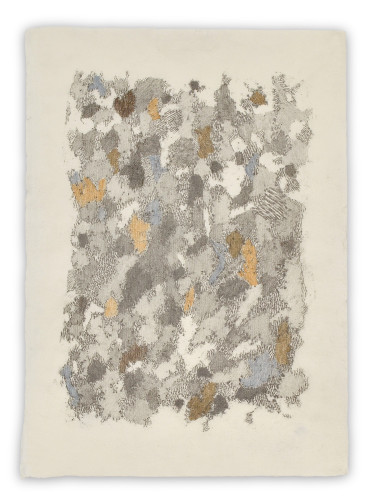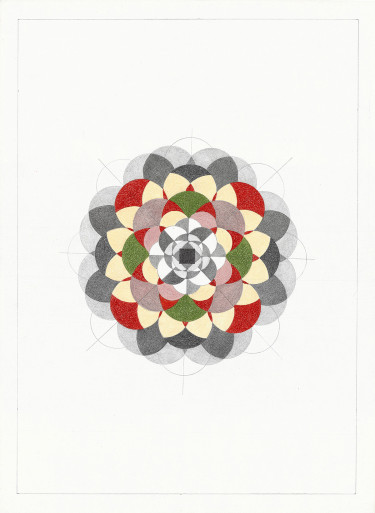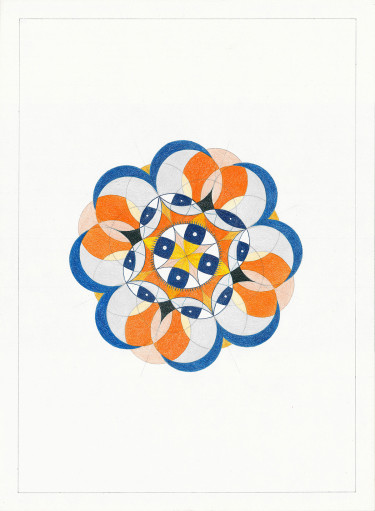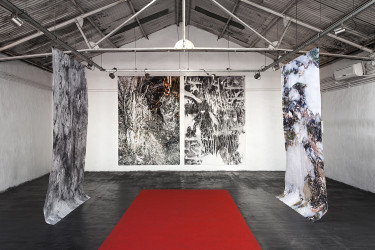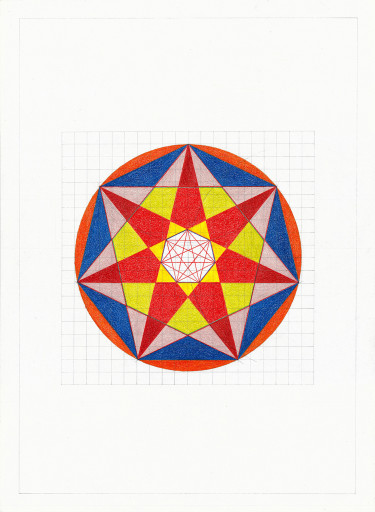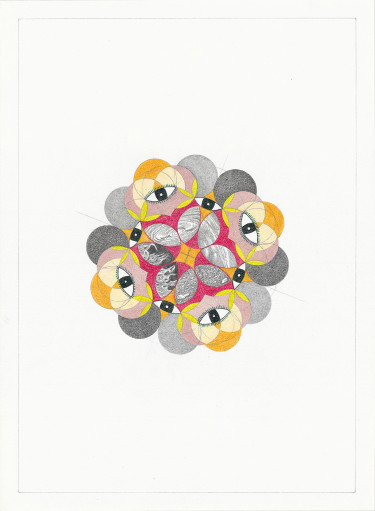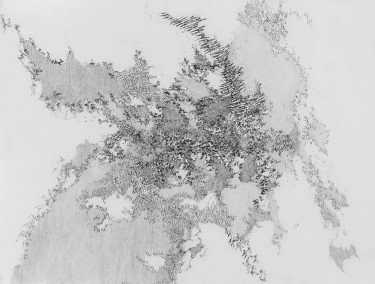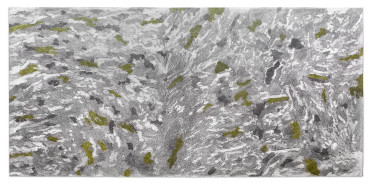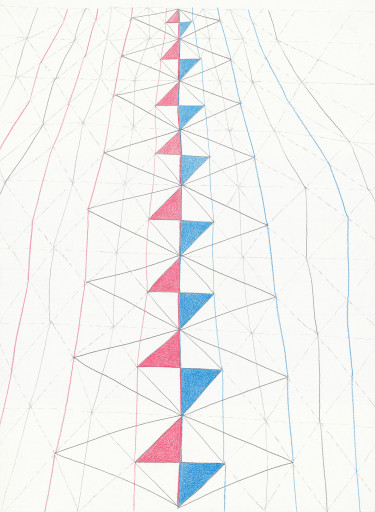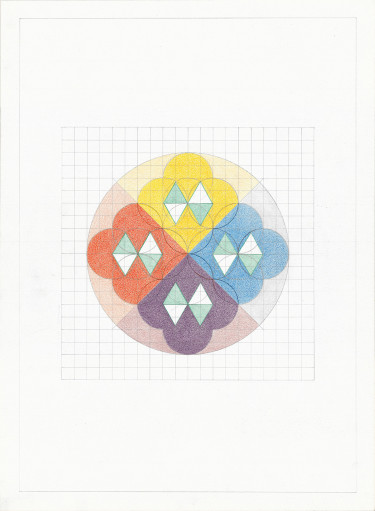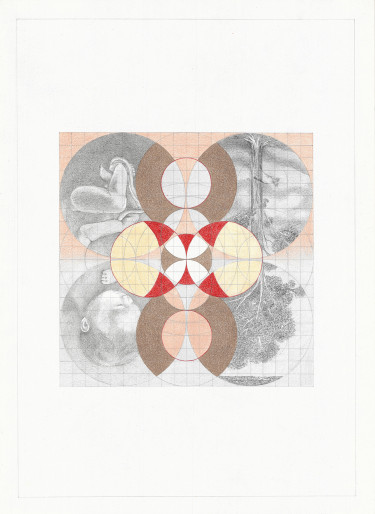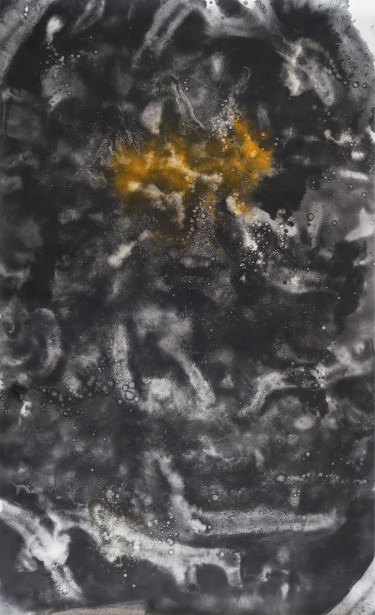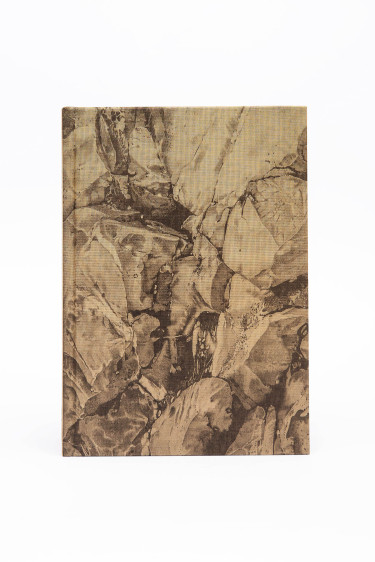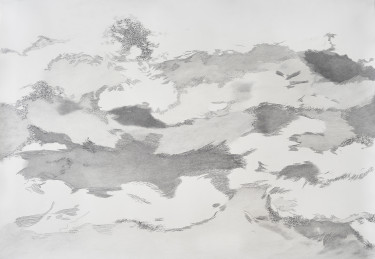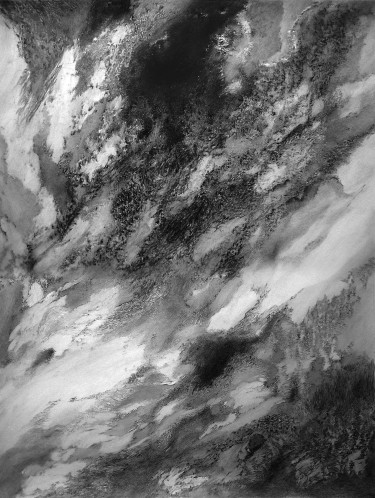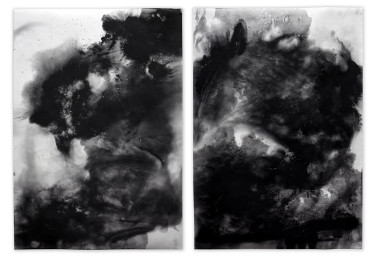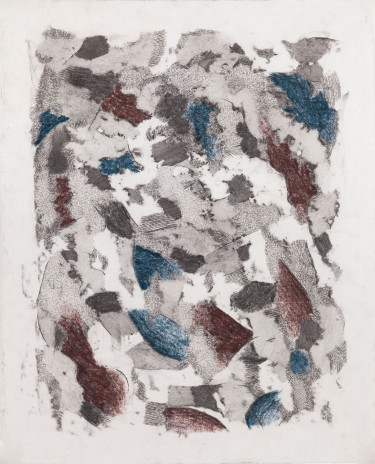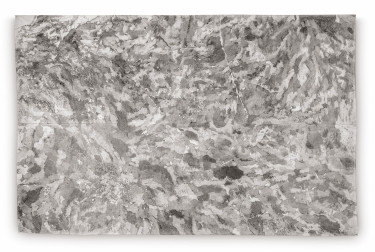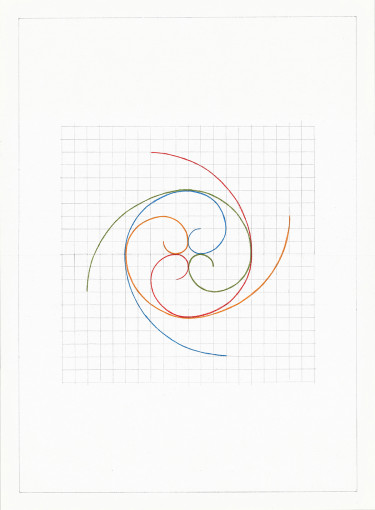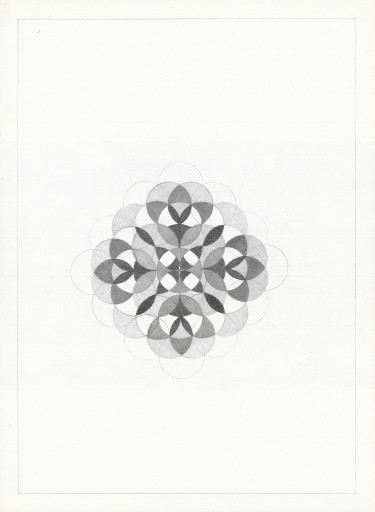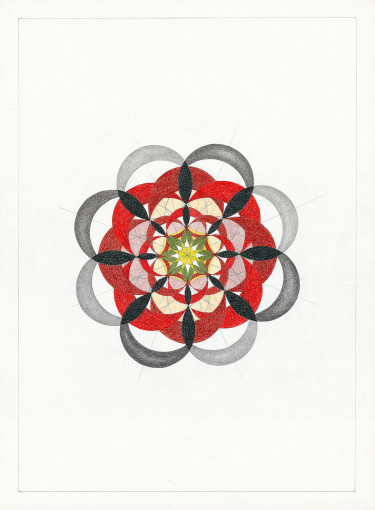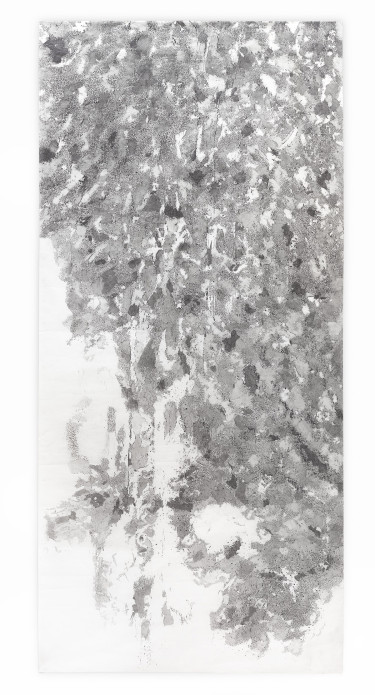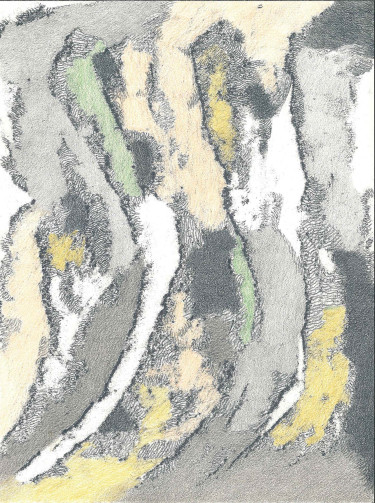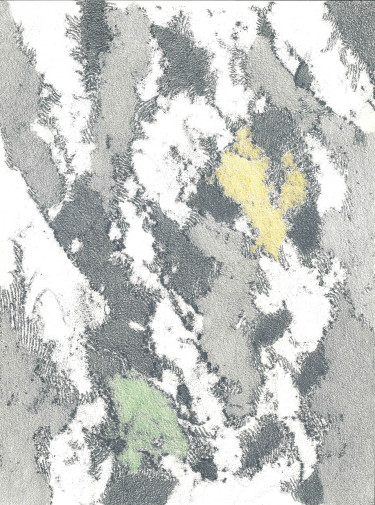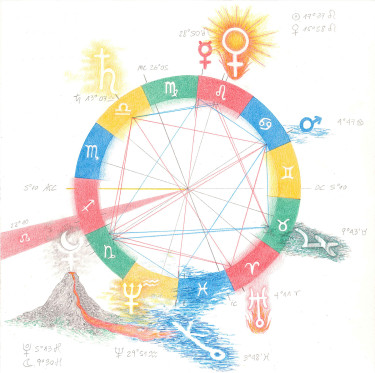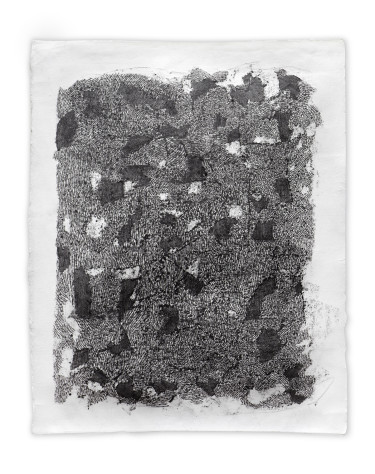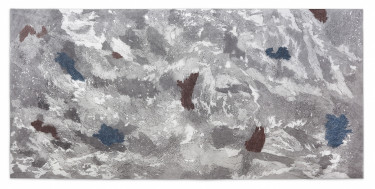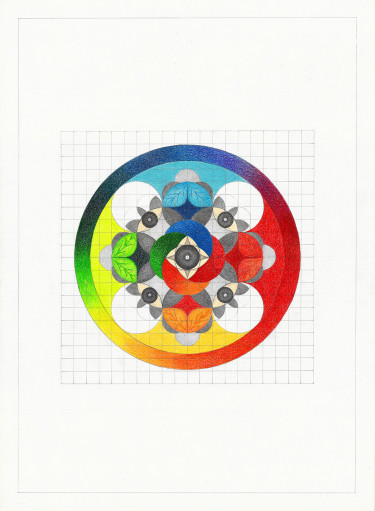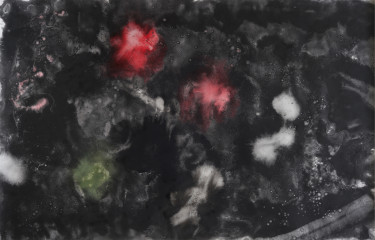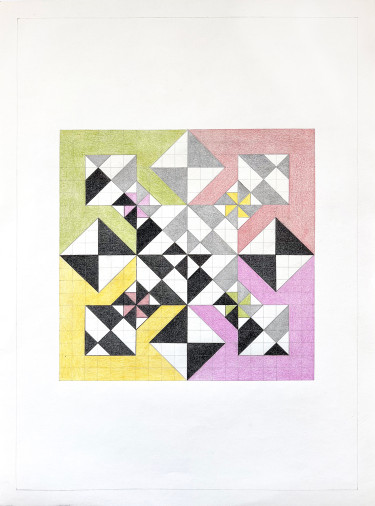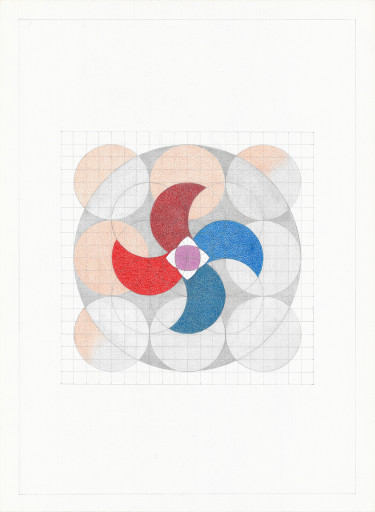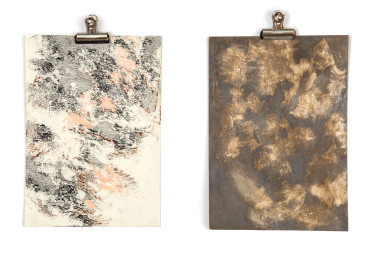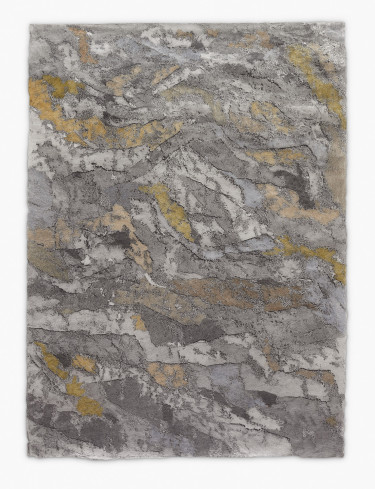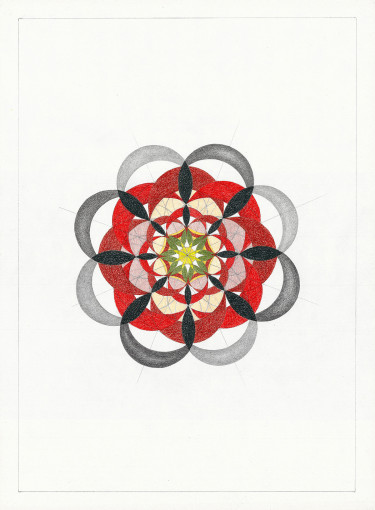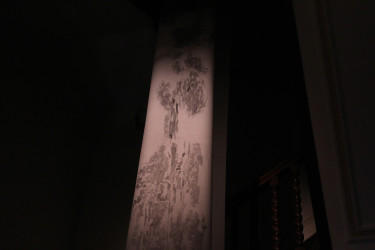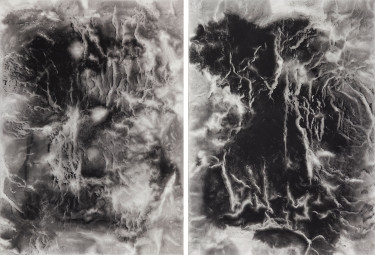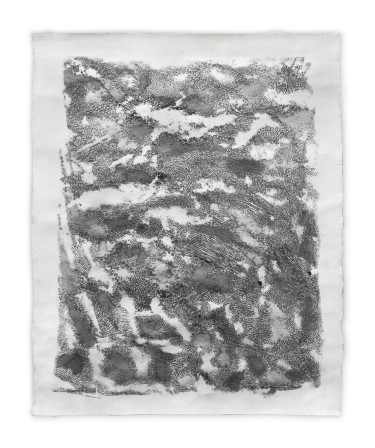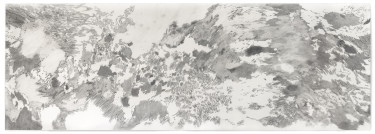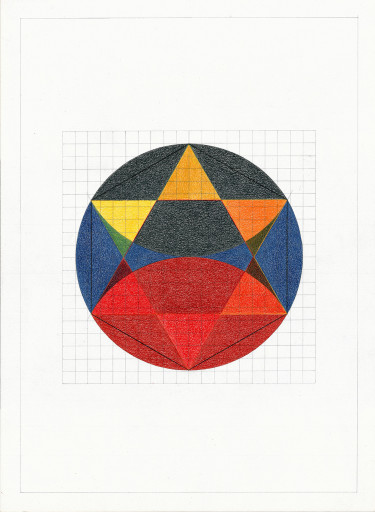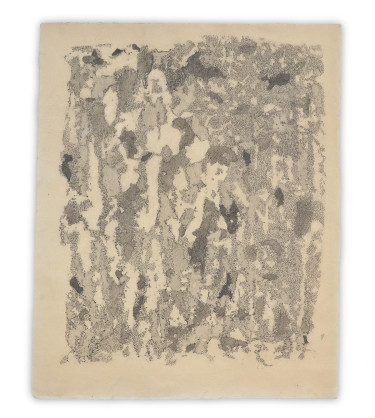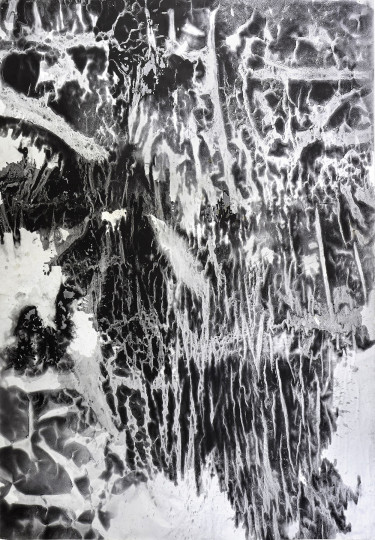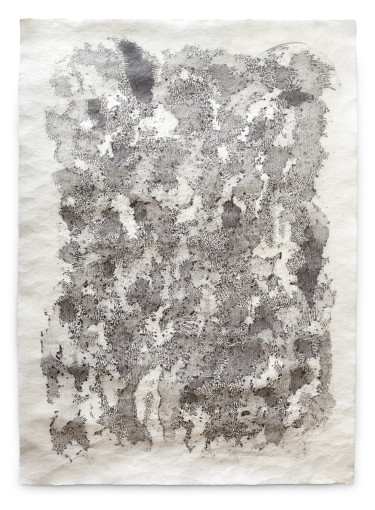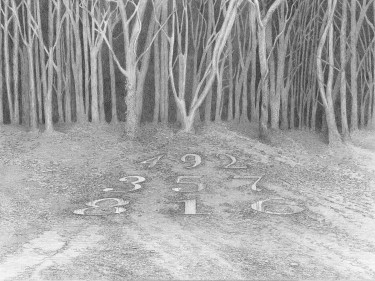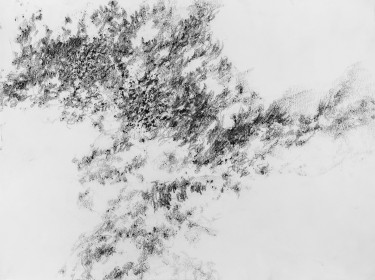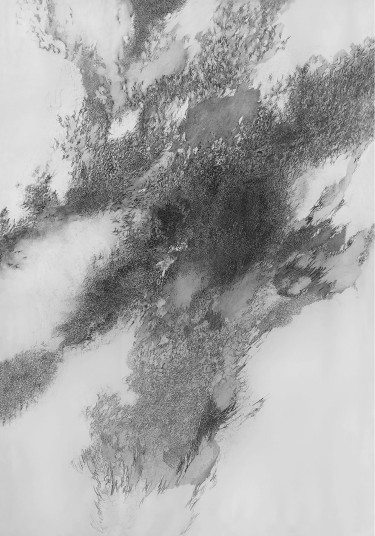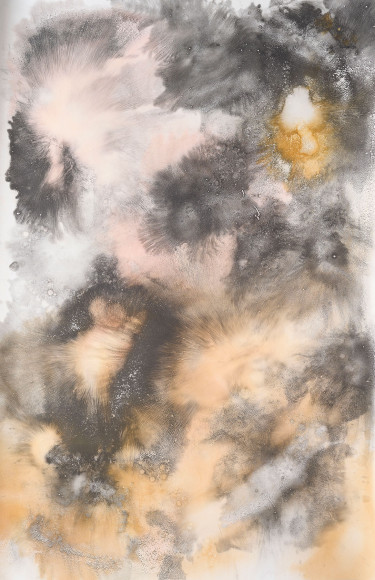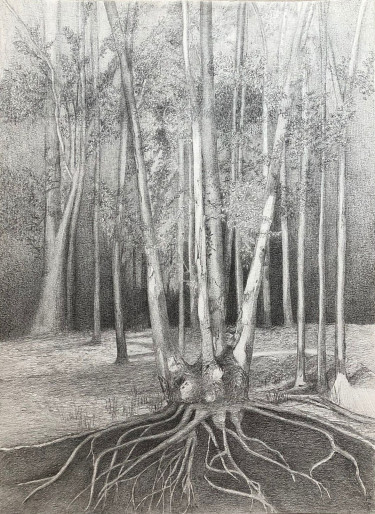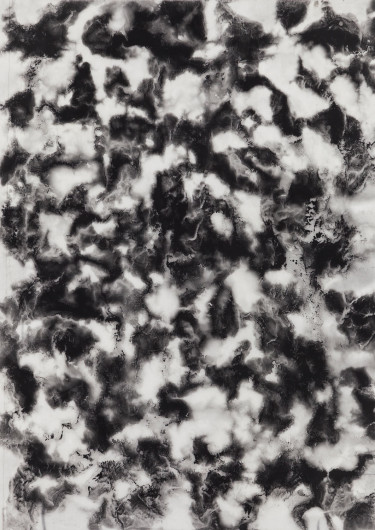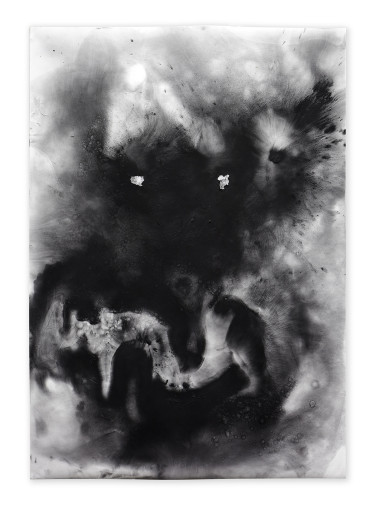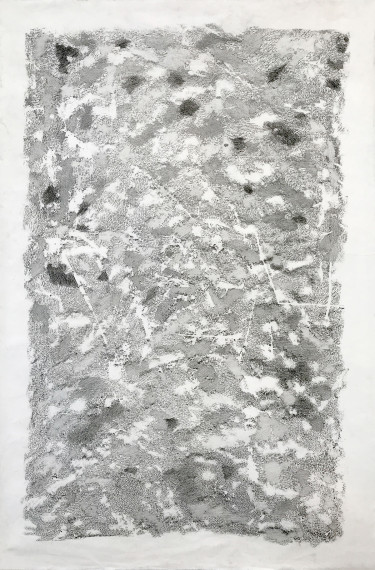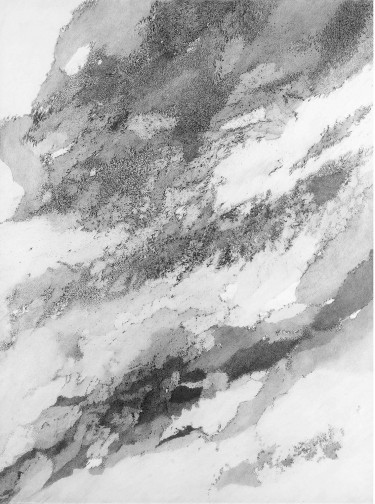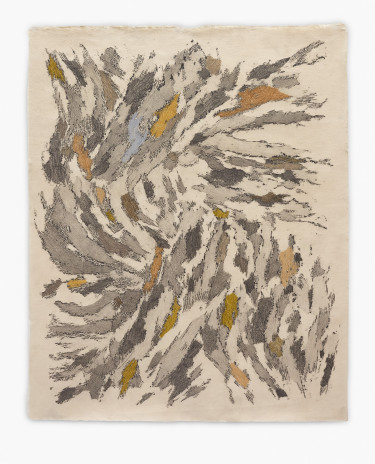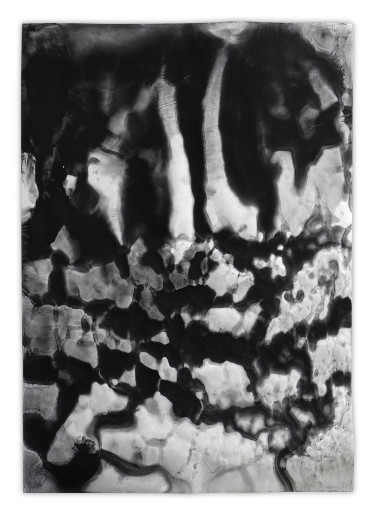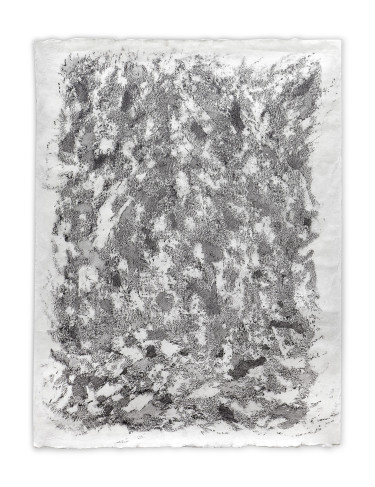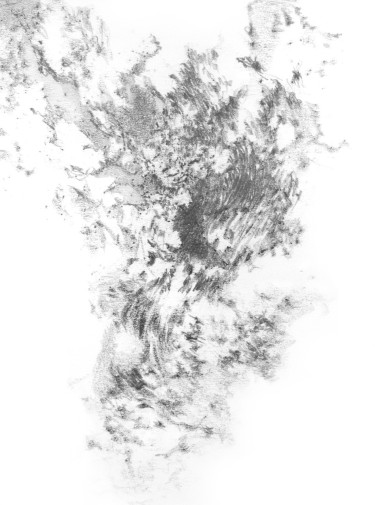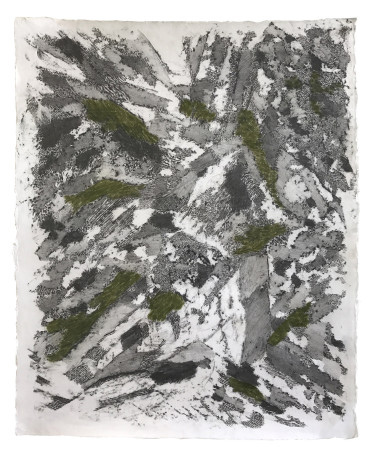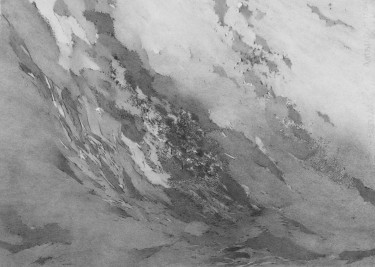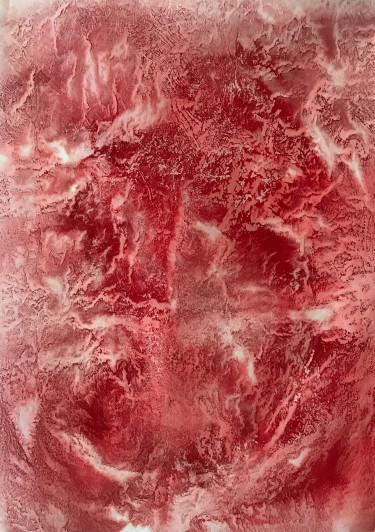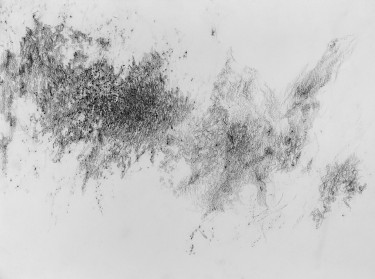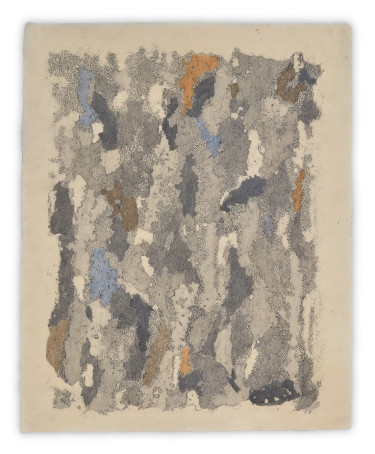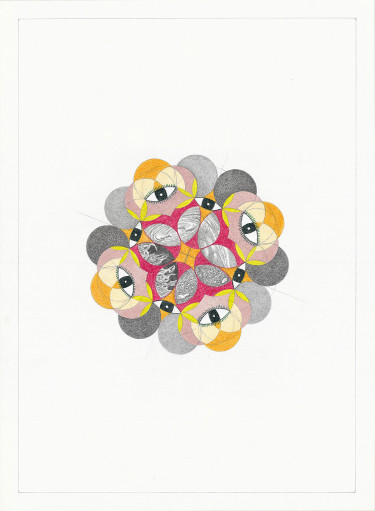I never did anything out of the blue
TDS : It is important to point out that the exhibition in the gallery only represents a fragment of Mariana’s work, of her current work. In fact, whenever you are looking at one of Mariana’s pieces, you are in fact only looking at a fragment of her work, since her production is one uninterrupted continuum. Each piece is an episode, or a series of episodes part of a long story, where the sequence of these episodes can either be interchangeable or alternative. Her work is always unfinished, in constant movement and ongoing. Having started with drawings in a specific size, her work then expanded onto ever increasing sizes, up to many metres long, involving long and arduous procedures.
YKW : Benway associates Mariana’s work with the action painters from the abstract expressionist movement, which is comparable, because when you see Mariana at her work table, in front of large sheets of papers -even rolls of paper of up to 10 metres long, which cannot be spread out in their totality- she approaches her work from different angles, without any sort of previous planning. The resulting image is a documentation of that action, of the physicality of that action. Although the attitude is less vigorous and more meditative than the american action painters.
TDS : Yes, they are indeed different strategies. Although there is always a performative attitude in drawing or painting –which varies according to the levels of gestuality which goes with the process, and which depends on each painter- in the case of Mariana particularly her style has to do with using the whole body, where she sprawls herself over the work table in order to continue the drawing that appears to overflow beyond her, even physically; as if immersed in music and the artwork, as if the drawing were all encompassing. Consequently, in some of her works, Mariana appears to be representing ‘something’, whereas in fact she is representing her own action. What she represents isn’t so much a motif, but rather the proof of her own presence; and this presence is conveyed in different ways, in different times, with different temperaments, and different modulations. Her works are practically a sort of long cryptic autobiography, because it is impossible to translate what the works say of themselves.
Artists often begin with a sketch or a preparatory study, which they then carry out, and this allows for a certain distance with the work, a certain possibility for preliminary reflection. But when Mariana says “I have no objective, I begin with frottage” she is referring to a way of surrendering to the drawing, where the rhythm, definitions and contents that appear respond to a strong level of chance. In Mariana’s work there is a constant play between control and lack thereof, something like a controlled lack of control. The key in her work is the thoughtlessness and spontaneity, where the intensity of the drawing varies according to different moments in the day.
YKW : This way of working, sprawled over the work, as opposed to standing or sitting in front of a canvas, enables her to have a polyphony of perspectives.
TDS : Rosalind Kraus has a wonderful text where she mentions how the perception of the artist who works sprawled on all fours over the canvas instead of facing the canvas changes -such as in the case of Jackson Pollock- because the horizon line of the point of view is completely different. And you can see this in Mariana’s work: in her drawings there are images that seem to come from a specific point of view, and then suddenly, in the same drawing, you encounter images that seem to come from an aerial point of view. And then there are instances where Mariana herself appears to be part of the drawing, as if it were wrapping her completely like an inverted panopticon, where her figure merges into the scenery.
YKW : I also think that this merging that you mention, that can be detected in those fragments that seem to be drawn from different centres, also reflect the contemplative disposition with which she approaches all of her work. Mariana mentions that in order to draw she needs to be in a certain state of mind. “When my breathing slows down and my mind becomes blank, that is when the drawing materialises and expands, like some sort of organic matter”. So on one side these drawings are a reflection of her state of mind and its fluctuations, and on the other hand, there is the idea of letting go of one’s self, in order to listen, and allow what emerges to materialise from a dialogue, where the drawing either guides or is guided through Mariana. It is important to distinguish this process from that of merely unloading.
TDS : There certainly exists a paradoxical game where you are creating the drawing, but in the process the drawing starts to direct you. So one could say that, at a certain point, the drawing is defining you. There is a point of surrender, where one becomes the passive subject of the one that dominates, which in this case is the drawing. There are moments when one is the creator, and other moments when the work of art takes over. In the case of Mariana, there is quite a strong case of non-subjectivity when it comes to creating her work. By this I mean that her subjective intention does not go beyond basic decisions, such as the use of pencil and paper. She then gives into the evolution of the drawing, in its own time and development, and this is when the images emerge. Landscapes begin to materialise. Although I'd rather not use the word landscape, as I find its notion limiting and incorrect. The landscape refers to a specific type of painting, like a cut out from a larger scene, where one sees something that has a beginning and an end. And this is precisely why we are attracted to Mariana’s work, because of the lack of beginning and end, apart from in its formats and dimensions. In fact, one could also say this about her trajectory in general. The changes that naturally occur in all artist’s creative development due to a subjective proposition, in the case of Mariana occur because of her perseverance and commitment to one specific creative path, which lead her to explore and further delve into that same path, with the conviction that it is limitless; a path that enables her to discover universes for which she does not need to do anything other than surrender to the basic requirements and minimal implements that she uses. Mariana reproduces something fundamental and central to art, which is the ability to reveal an infinite universe with a single utensil.
YKW : I find it appropriate that you mention the ideas of landscape, and continuum in Mariana’s work. It appears that as Mariana progresses in her activity, the work increasingly becomes a flow of consciousness; and this is another reason why there can be no beginning nor end within this flow of becoming. As if nothing other than a specific time, or a certain way of being was being represented. The limits of the rocks and mountains are being diluted, and become permeable, until they seem to be nothing other than mere markings on large rolls of paper that hang from the ceiling, and need to be read vertically - something which differs greatly from the horizontal view that we are used to seeing when looking at a landscape.
TDS : Yes, I’d say that she is increasingly drawing more instances than actual figurative subjects, moments in time that represent being in that moment and in a certain way. What predominates is a more austere and less representative image, where the works become depictions of textures; where an aerial view becomes so distant that all that is left for you to see of the mountain are its textures. Sometimes they look like piles of rubble, and other times they look like little excavations in totally arid terrains, where there is no point in creating any other kind of figurative representation. That is why they transcend themselves and we can no longer refer to landscapes. Because what Mariana has been doing is demolishing any kind of recognisable representation, and what is left is this strong relationship with the materials, and the representation of the act of creating. As if the act of drawing was stripped bare, increasingly crude and direct. The idea of continuum becomes more and more prominent, where there is no more time left for details.
YKW : Yes, the images are becoming progressively stripped and strange. I think that the idea of unfamiliarity is a constant in Mariana’s work; present in her previous works of the canvas pools, skateparks and slides, they remind me of Robert Smithson’s anti-romantic idea behind his ruins in reverse. I am referring to those unfinished places with industrial remains -like unfulfilled promises- that elicit such strangeness. In her later works, the images look more like depictions of a faraway land that were photographed by an old recuperated telescope. They are like fossils of an extinct civilisation –for which we are the only witnesses- a call to reinterpret them and restore a sense of meaning.
TDS : They are uninhabited environments, and there is an invitation to inhabit them again, but in order to do that there needs to be some kind of initiation, as if in order to settle into this universe -which isn’t naturally accessible- one would need to go through a process of transformation. These aren’t welcoming places at first glance. In order to inhabit these places you need a certain level of austerity.
YKW : That’s true. They demand for one to go through a process of personal asceticism, practically like a kind of baptismal bath. Maybe this is due to the rigorousness, the constancy and discipline with which she realises her actions that her works have a certain aura of religiousness, the essence of a cloister, a rite…
TDS : And silence too. It’s interesting how there is always a play with silence, that’s the first thing that summons you. It’s an invitation to meditate and contemplate, and highlights a tradition in art which invites one not to simply walk past and look at things from the corner of one’s eye -which is a very poor connection or behaviour in front of a work of art. Mariana’s work calls, through its own nature and extension, for a personal connection with it; it transforms your relationship with the work into an experience. And the medium for that relationship with contemplation is the silence that the work instigates.
This is about a discipline which avoids being a spectacle as a condition for developing the work. The spectacle has something to do with supermarket shelves: which products shine the most or have the strongest colour, and call for our consumerist tendencies. Whereas Mariana, with few materials, a pencil, paper and a rubber -which I don’t even think she uses much- sets out to create large scale works. That relationship between the minimal and the grand establishes a framework for the development of the work that is both distinctive and outstanding. The magnitude of these works is surprising considering the materials she uses to create them, and she does it so naturally. This demonstrates her complete trust in the passion that drives her, and the power of the pleasure she derives in this constant work which produces the most sublime results.

